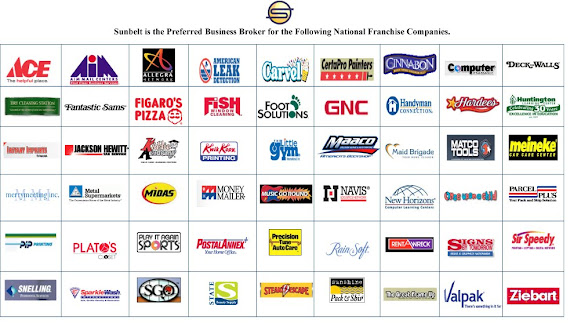Often times, public company data is used when attempting to value a privately-held firm. This comparison usually requires substantial adjustments to offset the risks inherent in the privately-held or closely-held company. These potential risk characteristics are usually elements that are overlooked by sellers, but not by potential buyers.
Sellers obviously look at their companies much differently than do prospective acquirers. Owners and company officers tend to place value on different factors than does a buyer. However, when it comes time to sell, it's important that the seller consider those factors that are important to a buyer.
Interviews with buyer prospects reveal that they are concerned with, and influenced by, the factors outlined below. They are often the basic considerations that determine whether they actually purchase the business, as well as the price they are willing to pay. It is the buyer's evaluation of these factors that can make or break a possible sale.
Buyers tend to look at these elements as risk factors. They also look at the expectation of future earnings. The following characteristics affect, both positively and negatively, the future earnings potential of and the risks involved in a target business.
Historical Earnings
The history of a company's earnings is very important to a prospective buyer. A long history of stable, and hopefully increasing, earnings is a positive factor in whether the buyer will pursue the acquisition. Conversely, a brief history or inconsistent earnings will certainly be a negative factor. A short time frame (for example, a company that has been in business for a year or less) and erratic earnings present obvious risk factors.
Entrepreneurs often underestimate the costs (and time) necessary to get the company to a profitable level. Start-ups are difficult to sell under the best of circumstances. The next time period in the life of a business is after three years, at which point there is some history, and a track record is beginning. The third period is usually after the company has been in business for a minimum of five years. Now the company has a track record and a reasonable history of performance.
Click "HERE" to view the entire article.
Helping You Buy or Sell a Business
HERBERT HOOVER
"Economic depression cannot be cured by legislative action or executive pronouncement. Economic wounds must be healed by the action of the cells of the economic body - the producers and consumers themselves."

Purchase a Business with Your 401k
Why? Because there are NO penalties, that’s right. This 401k Rollover program lets you use your 401k and other retirement funds to invest in a business – TAX AND PENALTY FREE. This is a safe, proven plan based on long standing provisions of the Internal Revenue Service (IRC § 6501). By using pre-tax retirement dollars to fund your business, you gain equity in your business and improve cash flow from day one. Use the funds to receive a salary during startup, while accelerating profitability by eliminating or reducing interest or debt. Application, creation, and funding is fast; typically (2-3 weeks or less). You can even set aside tax deductible retirement savings up to $200,000/yr. The benefits of using your 401k:-Minimize debt-Enhance cash flow-Stimulate business growth-Build equity-Take full advantage of tax benefits

- Indy Business Broker
- Noblesville, Indiana
- With over 16 years of business ownership, management and sales, Dave understands the needs of both buyers and sellers in confidential business transactions. As a former owner of a mortgage company, he also brings a unique perspective of the financing aspect of deal making. Since joining Sunbelt in 2004, Dave has represented a variety of companies in such industries as service, distribution and manufacturing. Dave has a reputation for successful transactions and consistently receives compliments from both buyers and sellers for his diligent work and adding tremendous value to the transaction process. In 2010, Dave successfully completed the necessary courses and requirements to be designated a Certified Mainstreet Business Broker (CMSBB). Dave’s education and experience includes: Indiana State University (Business Management), Indiana State (Securities Division) and Mortgage Brokers License (8 years). In his spare time, Dave and his family: Angela, Jayden (14) and Kade (12) enjoy family vacations and traveling, sporting activities and their local church. Contact Dave at 317.218.8626 or cell at 317.508.6690 dgorman@sunbeltindiana.com

Sunbelt Indiana Business Resource has been, and continues to be, the leading business brokerage in Indiana specializing in the marketing and sale of small and mid-size businesses. Consequently, our clients consider us more than business brokers. We serve as the business intermediary, strategist and advisor, giving us an objectivity that facilitates the entire transaction. As professional advisors, we maximize the market exposure of the business opportunity resulting in a mutually beneficial transaction for both seller and buyer. With more professional brokers on our staff than any other business brokerage in Indiana, the business is assured the maximum confidential exposure to the marketplace. In addition to our national presence through the Sunbelt Network, our extensive network of professional contacts among accountants, attorneys, bankers, venture and entrepreneurial sources also ensures that active buyers in the market are routinely, and in some cases exclusively, referred to us. Sunbelt Indiana Business Resource will provide business sellers a powerful set of solutions and services. In addition to traditional business brokerage, Sunbelt Indiana Business Resource will offer business valuation, equipment appraisal, new franchises, and hotel divestiture services. Buyers will be immediately exposed to in excess of 150 Indiana businesses available for acquisition, in excess of 10,000 businesses nationally, and over 50 franchisors looking to expand in Indiana.
We pledge to continue to provide the highest level of professional acquisition, divestiture, brokerage, and valuation services for Indiana's buyers and sellers.
We pledge to continue to provide the highest level of professional acquisition, divestiture, brokerage, and valuation services for Indiana's buyers and sellers.


Websites of Interest
Blog Stats
Available Franchises

